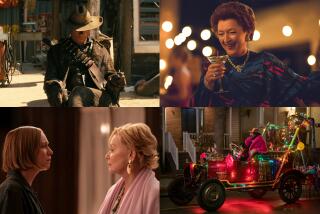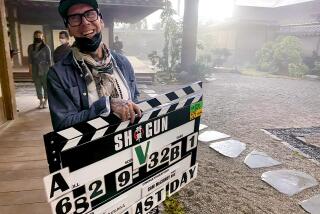How visual effects created the fiery chaos in ‘Game of Thrones’
- Share via
In the fifth episode of the final season of HBO’s “Game of Thrones,” lead visual effects producer Steve Kullback says they “set out to tell the biggest and most destructive story imaginable.” Directed by Miguel Sapochnik, “The Bells” received Emmy nominations for production design, costumes and visual effects with the series snagging a leading 32 nods overall.
Visual effects navigated multiple story lines, including Daenerys Targaryen’s obliteration of King’s Landing with the help of the dragon Drogon, Arya’s race through the city, the battling Clegane brothers and Jamie’s attempt to save sister-lover Cersei from a crumbling Red Keep.
Taking the script to screen required heavy lifting from the previsualization department helmed by previs lead Patrick Tiberius Gehlen, previs being a process where complex sequences are created using 3-D animation before principal photography.
Warning: Spoilers for the “Game of Thrones” series finale below.
“It starts with a collaboration between Miguel, cinematographer Fabian Wagner, the art department and visual effects where beat sheets and storyboards spawn into discussions of how we can take it to the next level,” says Gehlen over the phone.
Using scans of the main characters, the previs team is able to insert them into replicated sets where soldiers, horses, extras and fire-breathing dragons are added to bring the scene to life. The 3-D environment, driven by Maya software, also allows for filmmakers to detail exact camera movements and lighting that can aid other departments in how to approach the action.
Gehlen says, “We don’t previs anything that’s impossible to shoot on the day. We try to be as representational as we can as it informs the story more.”
An early task was mapping the scale of King’s Landing which is shown in the episode in its entirety in several wide shots. While locations in Croatia and Spain normally stand in for the city, huge sets were constructed in Northern Ireland allowing for its eventual destruction where production required up to 600 extras a day.
“Miguel wanted the audience to feel the terror of the people fleeing the city. He wanted them to feel the impending threat Cersei looked upon as Dany and Drogon approach,” says Joe Bauer, lead visual effects supervisor. “What ultimately determined its size was how much we could believably destroy with a dragon and the impending firestorm and wildfire running in the city.”
When Drogon blasts through the main gate where Jon Snow and the Unsullied soldiers await, the explosion sends castle rock flying and soldiers are set ablaze. Outlined in previs, the calculated mayhem was a dance among stunt coordinator Rowley Irlam, special effects supervisor Sam Conway and visual effects.
“Joe is big on getting what we can from live elements instead of completely relying on CGI so the process was an intricate balance between the amount of soldiers and what needed to go where,” Gehlen notes.
Arya’s escape from the destruction, which Sapochnik initially envisioned as a one-shot but was broken up in editing, was planned by plotting points inside King’s Landing where the director thought her glorifying deeds took place. Bauer says, “Before we even touched anything, we could see how harrowing the dailies looked. We knew we would be extending the city, giving a sense of depth and creating continuity between the shots, but they were able to capture so much in camera.”
In what the crew called the “Clegane Bowl,” visual effects spent its time detailing failing debris, raining ash and crumbling rock during the battle between Sandor and Gregor. A practical set grounded the sequence and visual effects added atmosphere for continuity while destroying the building around the characters.
“When you watch it, you’ll see how much of everything is coming down. It was our way to play to the dramatic nature of the episode. That the whole world is falling apart while they are trying to kill each other,” says Bauer.
The final season of “Game of Thrones” disappointed many fans, but HBO programming chief Casey Bloys isn’t one of them.
And that theme is what has captivated “Game of Thrones” audiences since Season 1 – that notion that at any moment, a character’s world can come crashing down. What it did for filmmakers was challenge them in different ways as storytellers.
“It upped our game dramatically,” notes Bauer. “Everyone in their career hopes that one day they’re given an opportunity, the resources and are surrounded by professionals in other departments to create something resounding. We were lucky enough to experience it year after year on this show.”
More to Read
From the Oscars to the Emmys.
Get the Envelope newsletter for exclusive awards season coverage, behind-the-scenes stories from the Envelope podcast and columnist Glenn Whipp’s must-read analysis.
You may occasionally receive promotional content from the Los Angeles Times.










